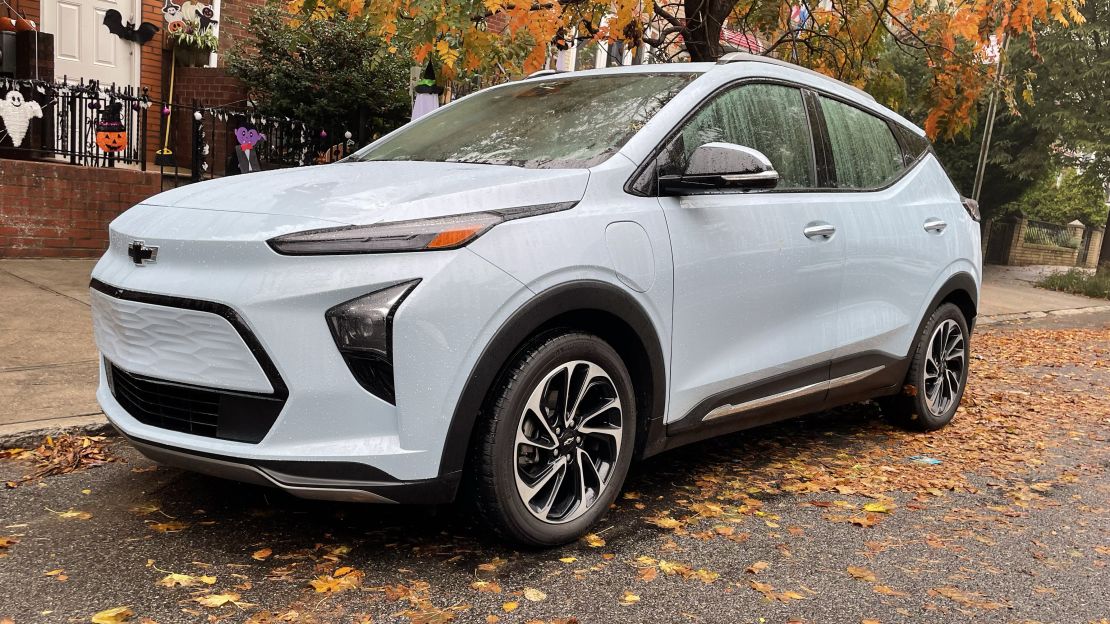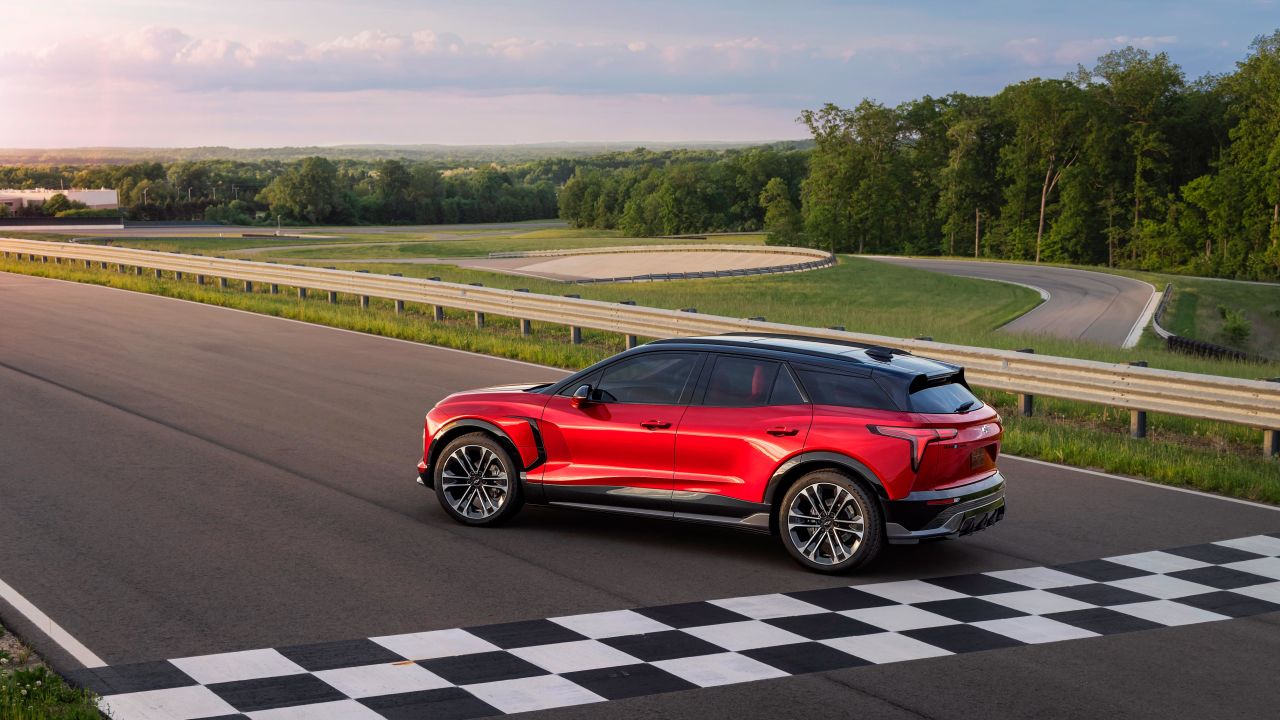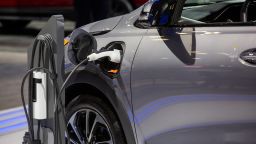General Motors makes a big deal out of the Ultium battery technology underpinning its new and upcoming electric vehicles like the Cadillac Lyriq, GMC Hummer EV and the Chevrolet Silverado EV pickup. But the GM EV that’s a hit with customers right now is, ironically, the Bolt, a model that was first introduced back in 2016 and that doesn’t use the new Ultium battery packs GM boasts about in its newer models.
As electric cars go, the Bolt is getting old. In fact, the Bolt has bounced back in a big way from a major crisis last year, when GM had to halt production because of an issue that could lead to battery fires in some cases. Customers were also warned to treat their battery packs gently and to avoid charging their cars indoors until the issue was resolved. CNN Business even questioned, earlier this year, whether GM might be about to “pull the plug on the Bolt.”
Then, in April, with the battery issue resolved, and gas prices coincidentally spiking, GM restarted Bolt production. Sales took off like a Corvette Z06 in Launch Mode. The Bolt EV and its new, more SUV-like sibling the Bolt EUV had record sales in the third quarter of the year with 14,000 being delivered to customers. Sales have come back so strongly, in fact, that GM now plans to increase production from 44,000 Bolts this year to 70,000 next year.
The Bolt still sells in far lower numbers than the Tesla Model 3 and Model Y, as Tesla accounts for just under two-thirds of the EVs sold in America, but the Bolt is the best-selling non-Tesla EV in the US. It even outsells the Tesla flagships, the Model S and Model X, according to a recent report from Kelley Blue Book.
“I would say the people that are getting the Bolt are probably just people who grind every day on their commute looking to save money on gas,” said Brian Moody, executive editor of AutoTrader.com. “Well, you can’t save money on gas if you spend $70,000 on the car.”
The average electric vehicle sold in America costs about $76,000, according to data from Edmunds.com. The Bolt’s closest competitor, in terms of price, is the Nissan Leaf, but the Leaf sells in much smaller numbers. In both vehicles, though, the most attractive feature is probably that low price.
Last summer, GM announced it was dropping the price of the Bolt EV to just under $27,000, a 27% drop from before the recall. That turned the Bolt into America’s cheapest electric vehicle. Prices for the new Bolt EUV, which is taller and roomier, dropped to a base of about $28,200, $6,300 less than before. For the 2023 model year, price dropped again. The 2023 Bolt EV now has a starting price of $25,600 and, for the Bolt EUV, $27,200. (Meanwhile, GM is offering cash incentives on those more expensive 2022 model year vehicles.)
The Leaf has a starting price of about $28,000, but the Leaf is still eligible for a $7,500 federal tax credit that is not available for the Bolt. It’s unclear if the Bolt will, once again, be eligible for tax credits when the full terms of the Inflation Reduction Act come into force in January.
Pent up demand in April after the months-long factory shutdown helped boost sales earlier in the year, said Bradford Franz, director of marketing for Chevrolet. But the price drops also helped a lot, he said, as did the introduction of some new design and trim features for the 2023 model year, like a sporty-looking “Redline” package for the EUV.
An overall increase in electric vehicles sales certainly also helped. In the US, EV sales rose 67% in the third quarter of 2022 compared to the same period last year, according to Kelley Blue Book’s report.
As with other cars, even the inexpensive Bolts get much pricier when options are added. A 2022 Bolt EUV Premium recently tested by CNN Business had a sticker price around $43,000, before incentives. It had things like heated and cooled front seats, wireless phone charging and wireless Apple CarPlay, and Super Cruise, GM’s hands-free highway driver-assist system.

It did not have all-wheel-drive, though. Despite being SUV-like, the Bolt EUV is only available with front-wheel-drive. Its EPA-estimated driving range on a full charge of 247 miles – 12 miles less than the Bolt EV – is good for the price, but it’s not amazing compared to more expensive EVs. Perhaps of more concern might be its maximum “fast charging” speed of just 55 kilowatts which means that, at a fast charger, Bolt owners can add up to 100 miles of range in 30 minutes while some other EVs can take in far more energy more quickly.
While it’s not exactly exciting to drive, the Bolt EUV is a respectable and practical vehicle with ample storage space in the back and surprisingly roomy backseats. Like many electric cars, it can be driven “one pedal” style, with the car braking gently as the accelerator pedal is lifted. That feature can be turned on and off, in case you want to coast like a regular car. Overall, though, the car’s interior materials and overall feel, which are fine for a $30,000 car, don’t quite match what buyers might otherwise get in cars costing over $40,000.
The Bolt was mildly redesigned for the 2022 model year, around the same time the EUV version was added to the lineup. It got a a slightly new look around the front and back ends, plus a few added features including the availability of that Super Cruise technology. Still, the Bolt is based on older engineering, which has helped keep its price down.
The Bolt being based on that old EV engineering means that GM is still making money on vehicle development work that was done years ago, said Moody. Hence, the low prices and, from that, renewed popularity. For customers who don’t need the latest stuff, it’s a good fit.
“I think they did the math and the math says there’s enough people that want that that it could be worthwhile,” said Moody.










